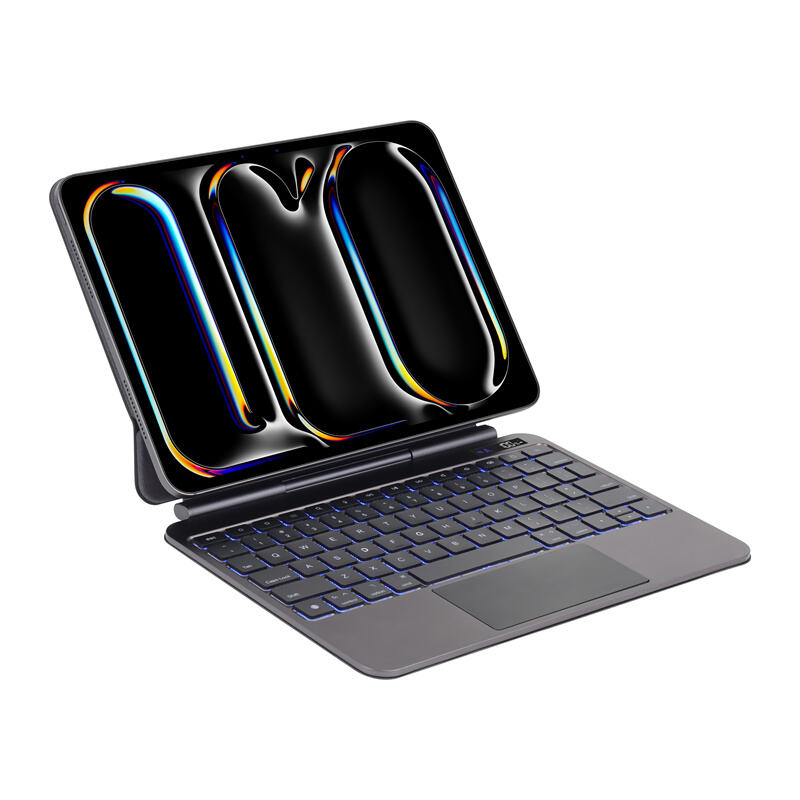Is the Magic Keyboard Really Necessary to Purchase?
The demand for pairing a tablet with keyboard accessories stems from users' extended needs in productivity scenarios. First, tablet accessories include keyboards, headphones, protective cases, styluses, adapters, and more. Approximately 80% of users purchase accessories immediately after buying a tablet, particularly protective cases, which primarily serve to prevent scratches or screen damage. It is reported that replacing a cracked original screen costs around $120 USD, a significant expense for most people. Users with gaming or work needs often opt for wired or Bluetooth wireless keyboards and mice. The Magic Keyboard is a tablet accessory that integrates protective functions with a Bluetooth wireless keyboard (featuring a trackpad). What is its positioning and functional value? Is it truly worth purchasing?
1.The Magic Keyboard Compensates for Tablet Limitations and Enhances Productivity
Virtual keyboards have inherent constraints. Touchscreen input on tablets is suitable only for lightweight tasks (e.g., replying to messages, simple searches), while physical keyboards significantly outperform virtual ones in tactile feedback and typing speed during prolonged typing or complex document processing. The Magic Keyboard delivers a laptop-like experience, transforming the tablet into a "pseudo-laptop" that meets demands for word processing, coding, spreadsheet editing, and more. It is especially ideal for mobile work or study scenarios.
2. The Magic Keyboard Strengthens the Tablet’s Role as a "Productivity Tool"
The Magic Keyboard expands a tablet’s application scenarios and caters to niche user requirements. By adding a keyboard accessory, the tablet evolves from a content consumption device (e.g., watching videos, reading) to a content creation tool, offering professionals in business, education, and creative fields an additional primary work device. For example, in educational settings, a keyboard combined with a stylus facilitates note-taking and essay writing, while split-screen multitasking enhances learning efficiency. For business users, carrying a "tablet + keyboard" during travel is lighter than a laptop, enabling quick email handling or impromptu meetings. Creative professionals benefit from shortcut keys that streamline design software operations (e.g., Procreate, Photoshop, Affinity Designer), and the trackpad allows precise adjustments (e.g., dragging files, fine-tuning layers). The Magic Keyboard’s trackpad supports iPadOS cursor controls for accuracy, while shortcut combinations (e.g., Cmd+C/V, brightness adjustments) boost efficiency, mirroring the MacBook experience.
3. Technological Trends Drive Form Factor Convergence
The Magic Keyboard aligns with the rise of "2-in-1 devices”, such as the Microsoft Surface Pro and iPad Pro, which blur the lines between tablets and laptops. Keyboards have become integral to their "complete form." Furthermore, advancements in foldable screen technology may influence future designs. Foldable tablets, when unfolded, could approach laptop sizes, potentially integrating external keyboards as "invisible accessories" (e.g., magnetic Magic Keyboards).
4. Why Choose a Premium Tablet Keyboard Accessory?
Optimized Experience: The Magic Keyboard’s aluminum build, backlit keys, and floating hinge design ensure stable typing and premium aesthetics, far surpassing generic, low-cost keyboards.
Deep System Integration: Features like auto wake/sleep, battery status display, and native shortcut support ensure seamless synergy with iPadOS.

5. Conclusion
Keyboard accessories act as a "productivity lever" for tablets, balancing portability and functionality. The Magic Keyboard allows a tablet to be both "pocketable" and "desktop-ready" expanding its utility from an entertainment device to a versatile terminal. While future technologies like flexible screens or AI-driven interfaces (e.g., projected virtual keyboards) may reshape input methods, physical keyboards remain the optimal solution for efficiency today.



